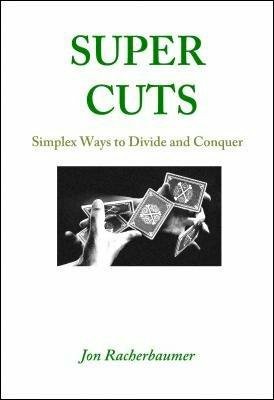The methods explained in this manuscript involve cutting a deck to ostensibly change its order. They are semi-automatic because minimal dexterity is required. Otherwise they are subtle in seductive ways and all of them are completely or partially false.
The false cut triggering this manuscript is Jay Ose's False Cut that was auspiciously introduced to magicians by Harry Lorayne. This false cut eventually made its way into the repertoires of card specialists, but early on it was primarily meant to be easily and quickly performed after false shuffling. It was to the point, expressing a pleasing, sixbeat action: cut, cut, cut…pick up…pick up…pick up. It was linear and, more important, looked legitimate.
The other false cuts in this manuscript are thematically or ancestrally related. They have been purposely arranged to demonstrate their technical connectedness and how they can service us and how they support and supplement each other.
The ultimate purpose of this compilation is to goad you to imaginatively seek what has not yet be discovered and then add it to the list.
- Introduction
- Proem
- Why Cut?
- When Did Three-Way Cuts Come Into Being?
- Ose's False Cut
- My Take On Ose's Cut
- Jim Swain's Addition
- Another Problem Posed
- About Optical Misinterpretations
- The Tenkai Reverse
- The Flustration Count
- Default Cuts
- Hopscotch False Cut
- Combi-Null Cuts
- Marnase False Cut
- Tap False Cut
- Oops False Cut
- Assertive Cut
1st edition 2017, 26 pages.
word count: 4742 which is equivalent to 18 standard pages of text




